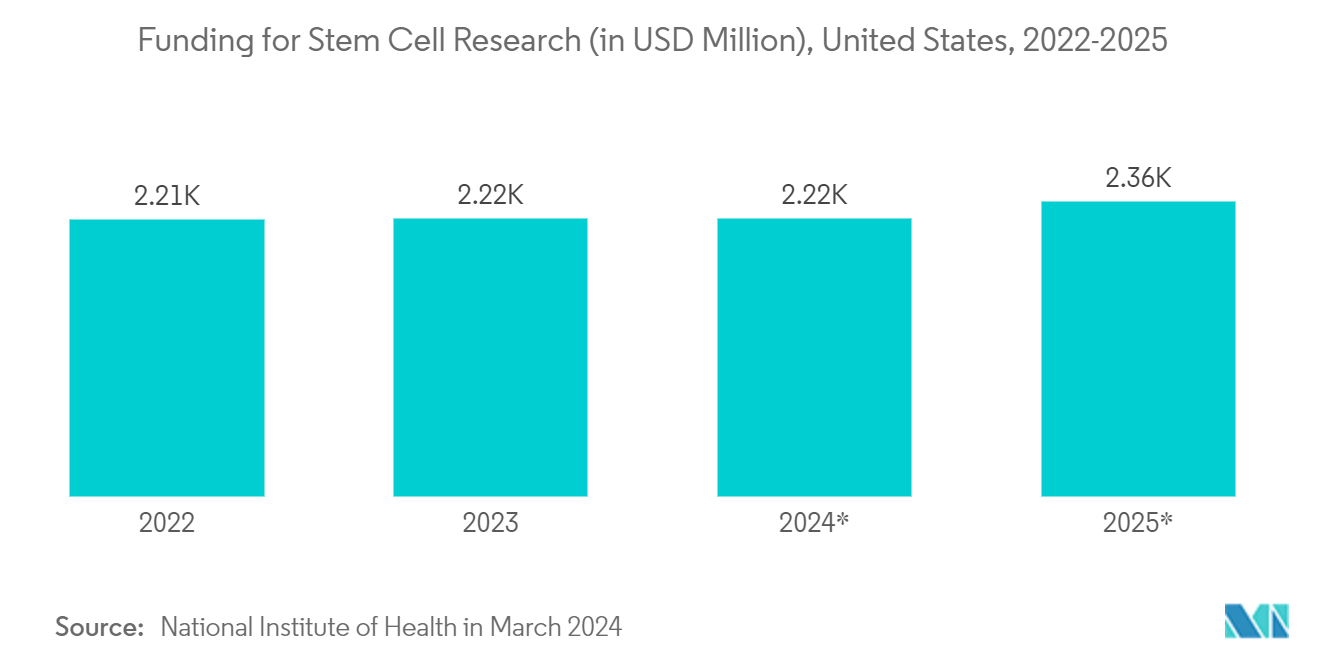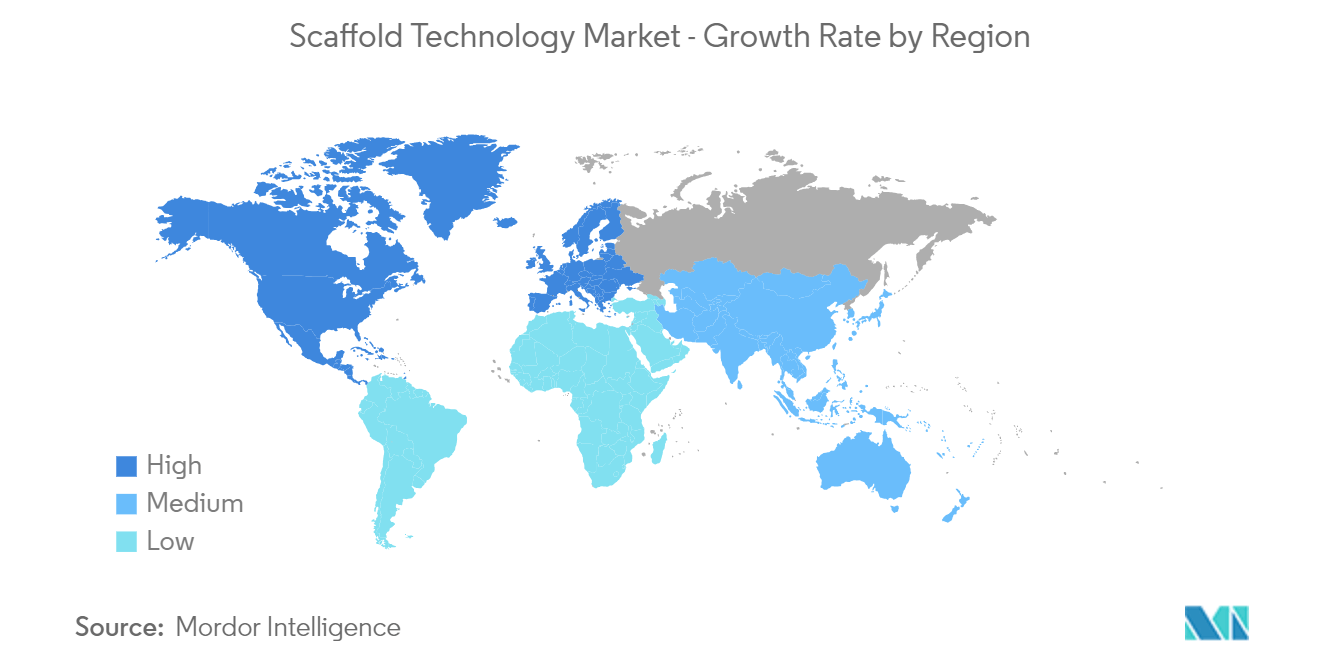Market Trends of Scaffold Technology Industry
The Stem Cell Therapy Segment is Expected to Hold a Significant Share in the Market During the Forecast Period
Scaffold technology is a pivotal component in advancing stem cell therapy, providing a three-dimensional structure that supports cell attachment, growth, and differentiation. By mimicking the natural extracellular matrix, scaffolds create an ideal environment for stem cells, enhancing their behavior compared to traditional two-dimensional cultures. As technological innovations continue to advance, scaffold technology is expected to be a key driver in the development of effective and transformative medical treatments.
The increasing research and development and growing application of scaffold technology in stem cell research or therapy is anticipated to increase demand, thereby boosting the segment's growth. For instance, as per an article published in Drug Target Review in March 2024, Dr. Sangheon Kim and his research team at the Korea Institute of Science and Technology (KIST) pioneered a three-dimensional scaffold for stem cell therapy targeting critical limb ischemia. The innovation, rooted in self-assembling platform technology, utilizes a novel collagen microgel. This biocompatible material facilitates seamless stem cell transplantation and boosts the survival rate of these cells, outperforming traditional 3D therapies that rely solely on the cells. Thus, increasing adoption of scaffold technology in stem cell therapy development is anticipated to drive the segment's growth.
Moreover, market players are engaging in research and development, product launches, and funding initiatives, which are anticipated to bolster the segment growth. For instance, in July 2024, Bioserve India introduced its advanced stem cell products in the Indian market. These innovative offerings from REPROCELL are designed to bolster scientific research and drug development, furthering the progress of regenerative medicine and therapeutic discovery in India. The stem cell products utilize scaffold-based platforms that replicate tissue architecture, enhancing drug screening and toxicity testing. Thus, such launches are expected to increase its adoption and propel the market's growth during the forecast period.
Thus, the growing application of scaffold technology in stem cell therapy, regenerative medicine, tissue engineering, technological advancements, and key strategies by the industry players is expected to boost the segment's growth during the forecast period.

North America is Expected to Hold a Significant Share in the Market During the Forecast Period
The North American scaffold technology market holds a significant share owing to factors such as advanced healthcare infrastructure, rising healthcare expenditures, increasing demand for regenerative medicine, and innovation in scaffold technology.
The rising prevalence of chronic diseases and an aging population are propelling the demand for regenerative medical treatments, where scaffolds play a crucial role in tissue engineering and repair. For instance, as reported by the Centers for Disease Control and Prevention in May 2024, around 21.6% of adults aged 18 and above were diagnosed with arthritis, approximately 58.5 million individuals. The likelihood of being affected by arthritis escalates with age, with close to 53.9% of those aged 75 and above reporting the condition. Furthermore, the data indicates a gender disparity: 21.5% of women are diagnosed with arthritis, in contrast to 16.5% of men. Scaffold technology is utilized to repair damaged cartilage in arthritic joints. Damaged cartilage does not regenerate naturally due to its limited blood supply, so scaffolds provide a necessary framework for new cartilage formation, thereby boosting market growth.
Further, the launch of scaffold-based products is significantly driving the market for scaffold technology in the United States by expanding its applications across various medical fields, including orthopedics, dentistry, and regenerative medicine. For instance, in April 2024, Abbott reported that the United States Food and Drug Administration had approved its everolimus-eluting bioresorbable scaffold, named Esprit BTK, targeting patients with below-the-knee (BTK) infrapopliteal disease. Additionally, in March 2024, Biotronik secured FDA breakthrough device designation for its Freesolve, a below-the-knee resorbable magnesium scaffold. The Freesolve BTK RMS is specifically engineered for patients suffering from chronic limb-threatening ischemia (CLTI). Hence, these products, which include advanced biomaterials and 3D-printed scaffolds designed for tissue repair and regeneration, address critical needs in treating conditions such as cartilage damage, bone defects, and complex surgical reconstructions, are expected to drive the market's growth.
A combination of a supportive healthcare environment, rising incidence of chronic diseases, increasing demand for innovative medical solutions, and ongoing technological advancements positions North America as a leader in the global scaffold technology market.


